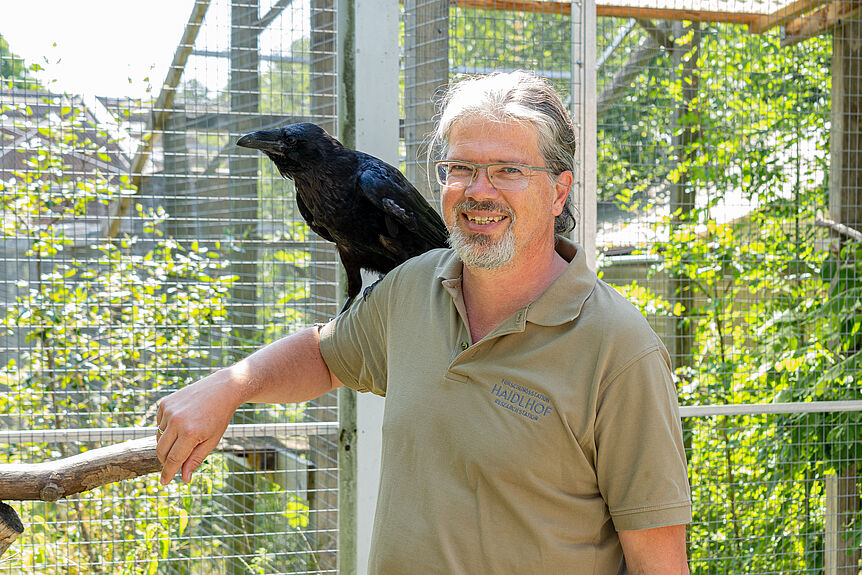News & Events
08.03.2024
22.12.2023
04.10.2023
Publications
Showing entries 31 - 60 out of 1370
Fischer S, Ferlinc Z, Hirschenhauser K, Taborsky B, Fusani L, Tebbich S. Does the stress axis mediate behavioural flexibility in a social cichlid, Neolamprologus pulcher? Physiology & Behavior. 2024 Dec 1;287:114694. Epub 2024 Sept 10. doi: 10.1016/j.physbeh.2024.114694
Fischer S, Duffield C, Swaney WT, Bolton RL, Davidson AJ, Hurst JL et al. Egalitarian cooperation linked to central oxytocin levels in communal breeding house mice. Communications Biology. 2024 Dec;7(1):1193. doi: 10.1038/s42003-024-06922-y
Nemeth M, Fritscher S, Füreder K, Wallner B, Millesi E. Metabolic rate and saliva cortisol concentrations in socially housed adolescent guinea pigs. Journal of Comparative Physiology B: biochemical, systemic, and environmental physiology. 2024 Dec;194(6):925-933. doi: 10.1007/s00360-024-01576-y
Klump B. Sexy tools: Individual differences in drumming tool shape. Learning & Behavior. 2024 Dec;52(4):287-288. doi: 10.3758/s13420-023-00620-1
Golshani S, Kepinska O, Gholami H, Golestani N. Neuroanatomy, episodic memory and inhibitory control of persian-kurdish simultaneous bilinguals. Scientific Reports. 2024 Nov 25;14(1):29151. 29151. doi: 10.1038/s41598-024-79955-2
Perea-García JO, Massen JJM, Ostner J, Schülke O, Castellano-Navarro A, Gazagne E et al. Photoregulatory functions drive variation in eye coloration across macaque species. Scientific Reports. 2024 Nov 24;14(1):29115. doi: 10.1038/s41598-024-80643-4
Hosseini A, Hosseini M, Schausberger P. Changes in induced plant defense to sequential attack by two herbivores through PGPR application in strawberry. In Proceedings of 25th Iranian Plant Protection Congress. 2024
Rampinini A, Balboni I, Golestani N, Berthele R. A behavioural exploration of language aptitude and experience, cognition and more using Graph Analysis. Brain Research. 2024 Nov 1;1842:149109. Epub 2024 Jul 2. doi: 10.1016/j.brainres.2024.149109
Giraldo-Deck LM, Loveland JL, Goymann W, Lank DB, Küpper C. A supergene affects androgen concentrations during early development in a bird with alternative reproductive morphs. Hormones and Behavior. 2024 Nov;166:105645. doi: 10.1016/j.yhbeh.2024.105645
Spezie G, Mann D, Knoester J, MacGillavry T, Fusani L. Receiver response to high-intensity courtship differs with courter status in spotted bowerbirds Ptilonorhynchus maculatus. Royal Society Open Science. 2024 Oct 23;11(10):232015. doi: 10.1098/rsos.232015
Pink KE, Fischer B, Huffman MA, Miyabe-Nishiwaki T, Suda-Hashimoto N, Kaneko A et al. No birth-associated maternal mortality in Japanese macaques ( Macaca fuscata ) despite giving birth to large-headed neonates. Proceedings of the National Academy of Sciences. 2024 Oct 15;121(42):e2316189121. doi: 10.1073/pnas.2316189121
Kleindorfer S. How Scientists Started to Decode Birdsong: Language is said to make us human. What if birds talk, too? New Yorker. 2024 Oct 14.
Common L, Katsis A, Frigerio D, Kleindorfer S. Effects of assortative mating for personality on reproductive success in greylag geese, Anser anser. Animal Behaviour. 2024 Oct;216:141-153. doi: 10.1016/j.anbehav.2024.08.004
Cui AX, Kraeutner SN, Kepinska O, Yeganeh NM, Hermiston N, Werker JF et al. Musical Sophistication and Multilingualism: Effects on Arcuate Fasciculus Characteristics. Human Brain Mapping. 2024 Oct;45(14):e70035. doi: 10.1002/hbm.70035
Nguyen TH, Schausberger P. Early-life diet experience structures personalities and individual foraging niches of omnivorous predatory mites. Entomologia Generalis. 2024 Sept 30;44(4):1005-1016. ESP146004404020. Epub 2024 Sept 8. doi: 10.1127/entomologia/2024/2527
Marasco V, Fusani L, Haubensak P, Pola G, Smith S. Brain gene expression reveals pathways underlying nocturnal migratory restlessness. Scientific Reports. 2024 Sept 28;14(1):22420. doi: 10.1038/s41598-024-73033-3
Schausberger P, Nguyen TH. Early-life intraguild predation risk produces adaptive personalities in mites. 2024. ISBE 2024, Melbourne, Australia.
García-Loor J, Gallego‑Abenza M, Katsis A, Puehringer-Sturmayr V, Colombelli-Négrel D, Akçay Ç et al. Aggressive behavior as a predictor of home range size: findings from both range‑restricted and widespread Darwin’s finch species. Journal of Ornithology. 2024 Sept 21;1-15.
Schausberger P, Nguyen TH, Mustafa A. Spider mite males undress females to secure the first mating. 2024. Meeting of the Acarological Society of Japan, Shizuoka, Japan.
Nourani E, Faure L, Brønnvik H, Scacco M, Bassi E, Fiedler W et al. Developmental stage shapes the realized energy landscape for a flight specialist. eLife. 2024 Sept 11;13. doi: 10.7554/eLife.98818
Kepinska O, Bouhali F, Degano G, Berthele R, Tanaka H, Hoeft F et al. Intergenerational transmission of the structure of the auditory cortex and reading skills. 2024 Sept 11. Epub 2024 Sept 11. doi: 10.1101/2024.09.11.610780
Perinot E, Mizrahy-Rewald O, Fritz J, Nobile MS, Vyssotski A, Fusani L et al. Small energy benefits of in-wake flying in long-duration migratory flights. Proceedings of the Royal Society B: Biological Sciences. 2024 Sept 11;291(2030):20241173. doi: 10.1098/rspb.2024.1173
Schausberger P, Altintas M, Rasch S, Bergantin E, Nguyen TH. Parental and early-life experiences drive predatory mite personalities. 2024. X EurAAc Symposium, Athen, Greece.
MacGillavry T, Frith CB, Fusani L. The mechanics of male courtship display behaviour in the Ptiloris riflebirds (Aves: Paradisaeidae). Biological Journal of the Linnean Society. 2024 Sept;143(1):blae077. Epub 2024 Sept 16. doi: 10.1093/biolinnean/blae077
Pike C, Hood-Nowotny RC, Kofler B, Richner H, Tebbich S. Nest climate and blood quality of two host species of the ectoparasitic Philornis downsi in the Galapagos Islands as factors of larval development. Frontiers in Ecology and Evolution. 2024 Aug 30;12:1398353. doi: 10.3389/fevo.2024.1398353
Schausberger P, Nguyen TH. Social isolation early in life disrupts personality expression in group-living predatory mites. 2024. 27th International Congress of Entomology, Kyoto, Japan.
Kreuzer L, Naber A, Zink R, Millesi E, Palme R, Hediger K et al. Horses’ Cardiovascular and Glucocorticoid Responses to Equine-Assisted Therapy with Women with Intellectual Disability: An Exploratory Study. Journal of Applied Animal Welfare Science. 2024 Aug 19. Epub 2024 Aug 19. doi: 10.1080/10888705.2024.2396968
Shaw AK, Fouda L, Mezzini S, Kim D, Chatterjee N, Wolfson D et al. Perceived and observed biases within scientific communities: a case study in movement ecology. bioRxiv. 2024 Aug 2.
Goncharova M, Jadoul Y, Reichmuth C, Fitch WT, Ravignani A. Vocal tract dynamics shape the formant structure of conditioned vocalizations in a harbor seal. Annals of the New York Academy of Sciences. 2024 Aug 1;1538(1):107-116. doi: 10.1111/nyas.15189
Akçay Ç, Colombelli‑Négrel D, Kleindorfer S. Buzzes are used as signals of aggressive intent in Darwin’s finches. Biological Journal of the Linnean Society. 2024 Aug;142(4):468 - 480. doi: 10.1093/biolinnean/blad152






